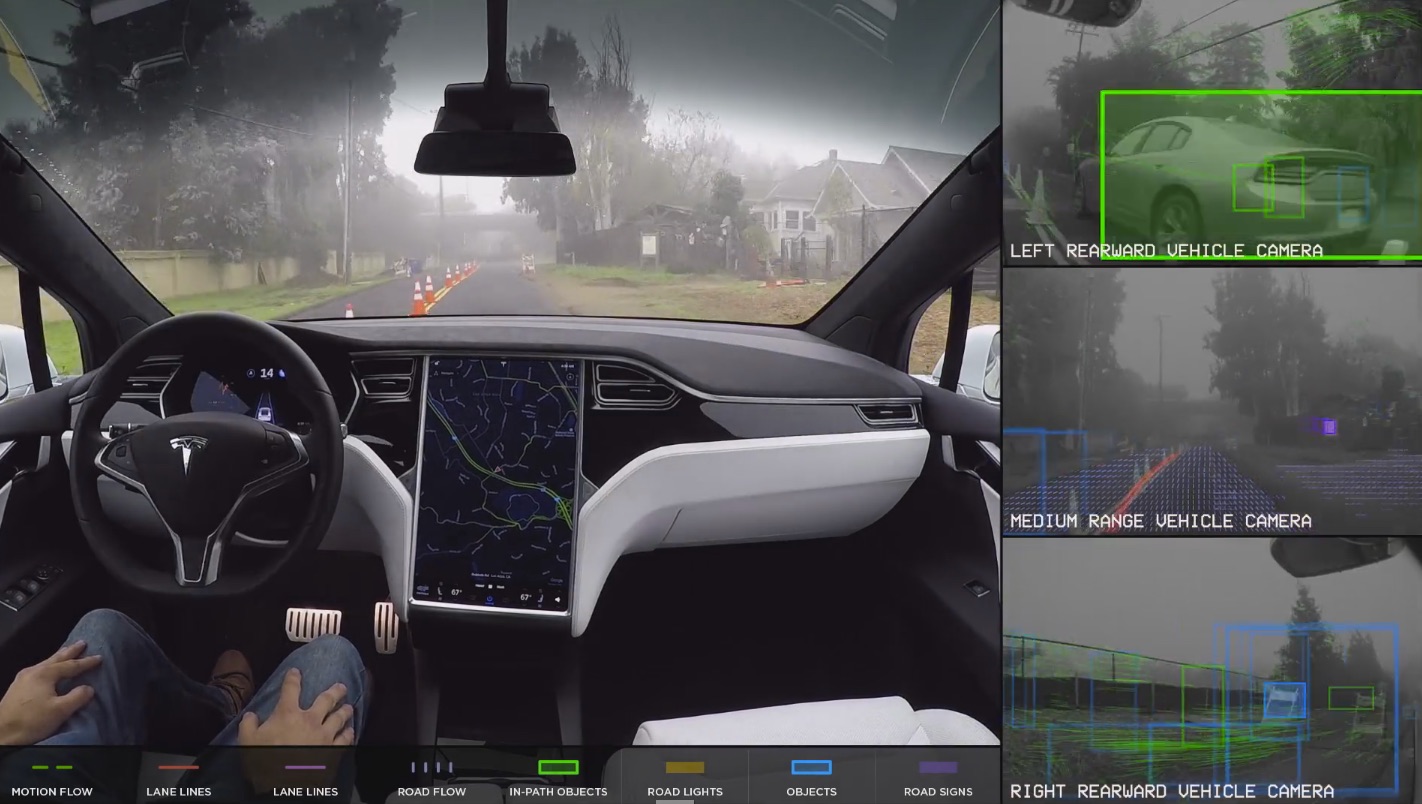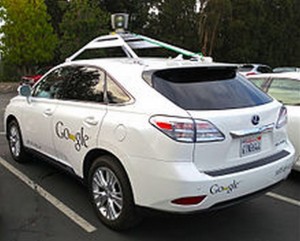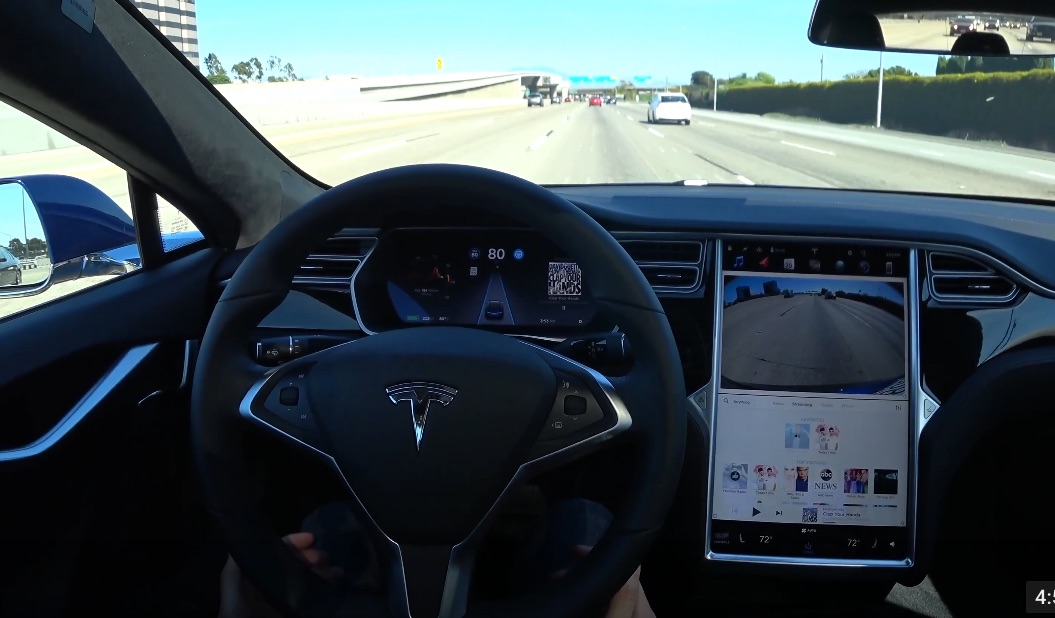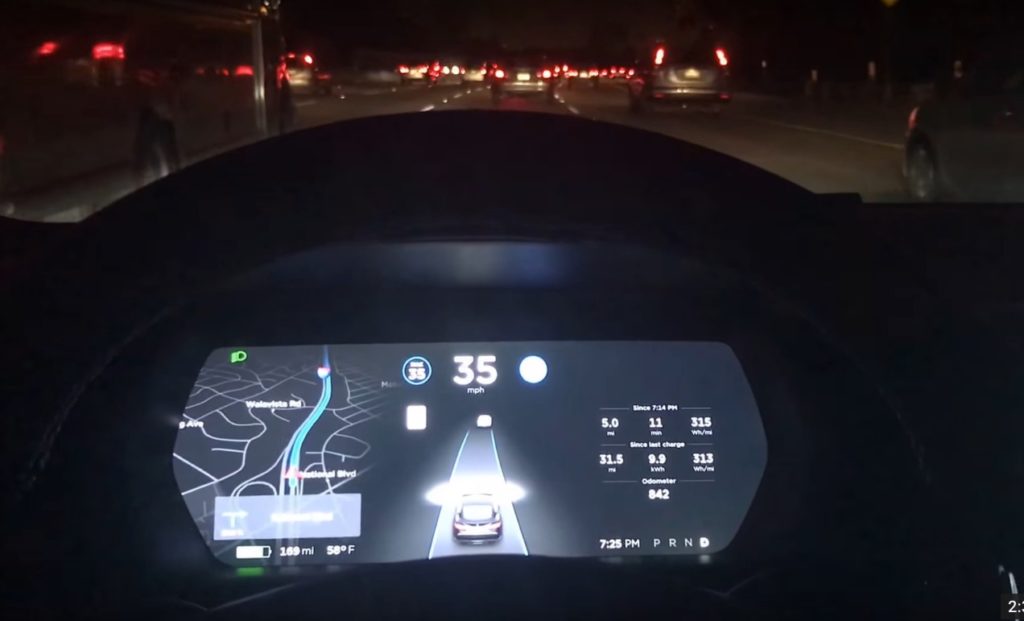

News
Tesla’s race to autonomy: No one said it would be easy
Need to type up a quick memo before work? Forgot to eat breakfast before driving to school? In just a few years, driving may be a more hands-off endeavor than ever before if companies like Tesla, Uber, Volvo, Alphabet, General Motors, or Ford have anything to do about it. You could be a passenger in your own self-driving car, weaving in and out of traffic with ease and parallel parking like a pro every time. It seems like most every company even tangentially related to cars is pouring money into the race for autonomy.
The freedom of self-driving cars is still heavily dependent on regulatory whim and technological availability, but some are setting demanding goals in an effort to finish first in that race. Tesla for example, plans to showcase its Full Self-Driving Capability by driving one of its fleet cars from California to New York, without human involvement, by the end of this year. But their competitors are moneyed, motivated and many.
The Self-Driving Battle Arena
For Uber, success in autonomous driving research could be a sweet distraction from the recent troubles of the company. Its self-driving program has been based in Pittsburgh, right next to Carnegie Mellon with its highly regarded robotics program since it began in 2015. Then-CEO Travis Kalanick was determined to stay on top of the industry. “It starts with understand that the world is going to go self-driving and autonomous,” Kalanick said in a 2016 interview with Business Insider. “So if that’s happening, what would happen if we weren’t a part of that future? If we weren’t part of the autonomy thing? Then the future passes us by basically, in a very expeditious and efficient way.”
Plagued by lawsuits, investigations, and subsequent executive upheaval that saw Kalanick’s resignation from the enterprise he founded, Uber is still one of the best places for researchers and engineers to work on their projects. The company has armies of vehicles across the country, vast datasets of information from the millions of miles its cars have covered through its ride-hailing branch, and the money to fund its engineers’ work.
 This does not mean that Uber’s self-driving program has remained untouched. Waymo, the autonomous car division of Google’s parent company, Alphabet, is currently suing Uber over files allegedly by Anthony Levandowski when he moved from Waymo to Uber. According to Reuters, in recent court filings, Waymo has claimed that Uber knew of the stolen intellectual property and even conspired with Levandowski to use it. Uber denies the allegations and actually fired Levandowski on May 30, claiming he had not cooperated with their internal investigation– and probably hoping to win some goodwill from the judge who has already said Waymo had produced a convincing case.
This does not mean that Uber’s self-driving program has remained untouched. Waymo, the autonomous car division of Google’s parent company, Alphabet, is currently suing Uber over files allegedly by Anthony Levandowski when he moved from Waymo to Uber. According to Reuters, in recent court filings, Waymo has claimed that Uber knew of the stolen intellectual property and even conspired with Levandowski to use it. Uber denies the allegations and actually fired Levandowski on May 30, claiming he had not cooperated with their internal investigation– and probably hoping to win some goodwill from the judge who has already said Waymo had produced a convincing case.
It is unlikely the scandals will affect the decisions of most researchers to stay with the company. As Wired’s Aarian Marshall points out, the long timeline of building a safe autonomous car makes engineers less likely to leave at a moment’s notice in a period of executive instability. And the branch’s position in Pittsburgh rather than Silicon Valley means the roiling news is less sensationalized and the researchers less affected. The ride-sharing company’s failure to live up to certain promises, including backing one of Pittsburgh’s federal grant proposals or hiring from neighborhoods near its test tracks, have drawn ire from many local activists and politicians, as reported by the New York Times. Even so, it has helped the city break away from its steel past and into a high-tech future.
Meanwhile, Uber’s main competitor in the ride-sharing industry, Lyft, has been making strides to continue chipping away Uber’s monopoly in any field, including self-driving cars, as Uber deals with scandal after scandal. As reported by Recode, Lyft is steadily gaining ground on Uber in terms of the share of ride-hailing app downloads as its ratings in the IOS App Store rise and Uber’s falls. This recent shift in market share comes as Waymo and Lyft start a new partnership that will combine Waymo’s advanced technology with Lyft’s vast amounts of data on people, where and how they drive. “Lyft’s vision and commitment to improving the ways cities move with help Waymo’s self-driving technology reach more people, in more places,” a Waymo spokesperson told Wired. Extending Waymo’s dataset beyond the few cities, including Phoenix and Pittsburgh, allows the enterprise to collect the small details of average people’s driving habits much faster and accurately than its test drives around Silicon Valley will.
But despite Waymo’s eight years of self-driving research, it still has to play catch up to Uber in some regards. Waymo just started testing autonomous trucks earlier this month, while Uber first used a self-driving truck to deliver a shipment last August, advancing its technology quickly after it snatched up the self-driving truck startup Otto—founded by Anthony Levandowski after he left Waymo— in January of 2016. Yet, Waymo has the benefit of its parent company’s huge cash reserves and data.
Growing Pains
Tesla is moving its autonomous program forward at an increasingly demanding pace, trying to meet that goal of driving from Los Angeles to New York by the end of this year. It, like Uber, is going through some executive shakeup: after just six months with Tesla, Chris Lattner, Vice President of its Autopilot Software program, left the company after reported tensions with Elon Musk. Tesla explained that the former Apple engineer was not a “good fit.” It stands to mention that working under Musk is notoriously a high-pressure gig. According to LinkedIn Insights, the average tenure of a Tesla employee is only 2.2 years, while companies like General Motors keeps its employees for almost 9. But Lattner’s exit is just one example of many of talented Tesla self-driving engineers leaving the company or being poached by the competition, like Waymo.
While Autopilot can do many impressive things— change lanes, brake before obstacles, and generally act as a rational human driver— it is far from perfect. The program is still technically in “public beta” testing, and rated by the National Transportation Safety Board as a 2 out of 5 on its scale of autonomy.
The fatal crash of a Model S owner Joshua Brown in May 2016 serves as a good reminder that drivers are cautioned to pay attention and keep their hands on the wheel at all times while using Autopilot. Tesla’s driving-assist feature, at the time, could not distinguish the difference between the bright sky and the white truck. Tesla and Autopilot were cleared of responsibility by the NTSB because Brown was given several warnings to take back control of the wheel. But it is a poignant example that Autopilot does not function as a self-driving car and still requires a driver’s full attention. After the accident, Tesla was forced to start developing its own hardware for Autopilot. Mobileye, which previously supplied Tesla’s image processing chips, ended its partnership in a public spat with Musk.
According to Lattner’s public resume, the transition to its own hardware presented “many tough challenges” to the Tesla team. Musk commented to shareholders in June that Tesla is “almost there in terms of exceeding the ability” of the original hardware. All of Tesla’s vehicles in production, including the upcoming Model 3, have the capability to engage Autopilot (for a price) and the necessary hardware to enable full self-driving someday. Autopilot will continue using the camera-based system that Tesla swears by, even as most of the industry focuses on developing LiDAR technology based on light and lasers.
And while Tesla prefers to work mostly alone, the rest of the industry is also pairing up, making deals, partnerships, and contracts between manufacturers, data giants, and service teams. Musk is taking a move out of Steve Jobs’ playbook by vertically integrating everything within the business, from top-to-bottom. Waymo and Honda, Lyft and Waymo, Autoliv and Volvo, Hertz and Apple, Intel and Mobileye, Audi and NVIDIA, and almost every other combination you could think of. Predictions for when the first company will reach the finish line range from within a year to two decades from now. And even if the car is made, there is still the question of if cities and states will allow autonomous vehicles to drive on their streets. The technology is closer than ever, but for now, please keep your eyes on the road.
News
Tesla launches in India with Model Y, showing pricing will be biggest challenge
Tesla finally got its Model Y launched in India, but it will surely come at a price for consumers.

Tesla has officially launched in India following years of delays, as it brought its Model Y to the market for the first time on Tuesday.
However, the launch showed that pricing is going to be its biggest challenge. The all-electric Model Y is priced significantly higher than in other major markets in which Tesla operates.
On Tuesday, Tesla’s Model Y went up for sale for 59,89,000 rupees for the Rear-Wheel Drive configuration, while the Long Range Rear-Wheel Drive was priced at 67,89,000.
This equates to $69,686 for the RWD and $78,994 for the Long Range RWD, a substantial markup compared to what these cars sell for in the United States.
🚨 Here’s the difference in price for the Tesla Model Y in the U.S. compared to India.
🚨 59,89,000 is $69,686
🚨 67,89,000 is $78,994 pic.twitter.com/7EUzyWLcED— TESLARATI (@Teslarati) July 15, 2025
Deliveries are currently scheduled for the third quarter, and it will be interesting to see how many units they can sell in the market at this price point.
The price includes tariffs and additional fees that are applied by the Indian government, which has aimed to work with foreign automakers to come to terms on lower duties that increase vehicle cost.
Tesla Model Y seen testing under wraps in India ahead of launch
There is a chance that these duties will be removed, which would create a more stable and affordable pricing model for Tesla in the future. President Trump and Indian Prime Minister Narendra Modi continue to iron out those details.
Maharashtra Chief Minister Devendra Fadnavis said to reporters outside the company’s new outlet in the region (via Reuters):
“In the future, we wish to see R&D and manufacturing done in India, and I am sure at an appropriate stage, Tesla will think about it.”
It appears to be eerily similar to the same “game of chicken” Tesla played with Indian government officials for the past few years. Tesla has always wanted to enter India, but was unable to do so due to these import duties.
India wanted Tesla to commit to building a Gigafactory in the country, but Tesla wanted to test demand first.
It seems this could be that demand test, and the duties are going to have a significant impact on what demand will actually be.
Elon Musk
Tesla ups Robotaxi fare price to another comical figure with service area expansion
Tesla upped its fare price for a Robotaxi ride from $4.20 to, you guessed it, $6.90.

Tesla has upped its fare price for the Robotaxi platform in Austin for the first time since its launch on June 22. The increase came on the same day that Tesla expanded its Service Area for the Robotaxi ride-hailing service, offering rides to a broader portion of the city.
The price is up from $4.20, a figure that many Tesla fans will find amusing, considering CEO Elon Musk has used that number, as well as ’69,’ as a light-hearted attempt at comedy over the past several years.
Musk confirmed yesterday that Tesla would up the price per ride from that $4.20 point to $6.90. Are we really surprised that is what the company decided on, as the expansion of the Service Area also took effect on Monday?
But the price is now a princely $6.90, as foretold in the prophecy 😂
— Elon Musk (@elonmusk) July 14, 2025
The Service Area expansion was also somewhat of a joke too, especially considering the shape of the new region where the driverless service can travel.
I wrote yesterday about how it might be funny, but in reality, it is more of a message to competitors that Tesla can expand in Austin wherever it wants at any time.
Tesla’s Robotaxi expansion wasn’t a joke, it was a warning to competitors
It was only a matter of time before the Robotaxi platform would subject riders to a higher, flat fee for a ride. This is primarily due to two reasons: the size of the access program is increasing, and, more importantly, the service area is expanding in size.
Tesla has already surpassed Waymo in Austin in terms of its service area, which is roughly five square miles larger. Waymo launched driverless rides to the public back in March, while Tesla’s just became available to a small group in June. Tesla has already expanded it, allowing new members to hail a ride from a driverless Model Y nearly every day.
The Robotaxi app is also becoming more robust as Tesla is adding new features with updates. It has already been updated on two occasions, with the most recent improvements being rolled out yesterday.
Tesla updates Robotaxi app with several big changes, including wider service area
News
Tesla Model Y and Model 3 dominate U.S. EV sales despite headwinds
Tesla’s two mainstream vehicles accounted for more than 40% of all EVs sold in the United States in Q2 2025.

Tesla’s Model Y and Model 3 remained the top-selling electric vehicles in the U.S. during Q2 2025, even as the broader EV market dipped 6.3% year-over-year.
The Model Y logged 86,120 units sold, followed by the Model 3 at 48,803. This means that Tesla’s two mainstream vehicles accounted for 43% of all EVs sold in the United States during the second quarter, as per data from Cox Automotive.
Tesla leads amid tax credit uncertainty and a tough first half
Tesla’s performance in Q2 is notable given a series of hurdles earlier in the year. The company temporarily paused Model Y deliveries in Q1 as it transitioned to the production of the new Model Y, and its retail presence was hit by protests and vandalism tied to political backlash against CEO Elon Musk. The fallout carried into Q2, yet Tesla’s two mass-market vehicles still outsold the next eight EVs combined.
Q2 marked just the third-ever YoY decline in quarterly EV sales, totaling 310,839 units. Electric vehicle sales, however, were still up 4.9% from Q1 and reached a record 607,089 units in the first half of 2025. Analysts also expect a surge in Q3 as buyers rush to qualify for federal EV tax credits before they expire on October 1, Cox Automotive noted in a post.
Legacy rivals gain ground, but Tesla holds its commanding lead
General Motors more than doubled its EV volume in the first half of 2025, selling over 78,000 units and boosting its EV market share to 12.9%. Chevrolet became the second-best-selling EV brand, pushing GM past Ford and Hyundai. Tesla, however, still retained a commanding 44.7% electric vehicle market share despite a 12% drop in in Q2 revenue, following a decline of almost 9% in Q1.
Incentives reached record highs in Q2, averaging 14.8% of transaction prices, roughly $8,500 per vehicle. As government support winds down, the used EV market is also gaining momentum, with over 100,000 used EVs sold in Q2.
Q2 2025 Kelley Blue Book EV Sales Report by Simon Alvarez on Scribd
-

 News3 days ago
News3 days agoTesla debuts hands-free Grok AI with update 2025.26: What you need to know
-

 Elon Musk1 week ago
Elon Musk1 week agoElon Musk confirms Grok 4 launch on July 9 with livestream event
-

 Elon Musk5 days ago
Elon Musk5 days agoxAI launches Grok 4 with new $300/month SuperGrok Heavy subscription
-

 News2 weeks ago
News2 weeks agoTesla Model 3 ranks as the safest new car in Europe for 2025, per Euro NCAP tests
-

 Elon Musk2 weeks ago
Elon Musk2 weeks agoxAI’s Memphis data center receives air permit despite community criticism
-

 News5 days ago
News5 days agoTesla begins Robotaxi certification push in Arizona: report
-

 Elon Musk2 weeks ago
Elon Musk2 weeks agoTesla reveals it is using AI to make factories more sustainable: here’s how
-

 Elon Musk2 weeks ago
Elon Musk2 weeks agoTesla scrambles after Musk sidekick exit, CEO takes over sales
















